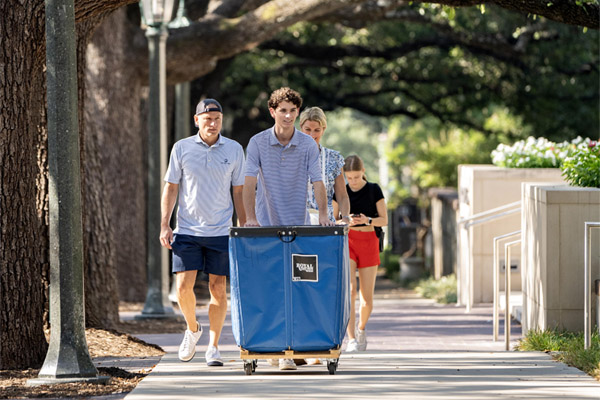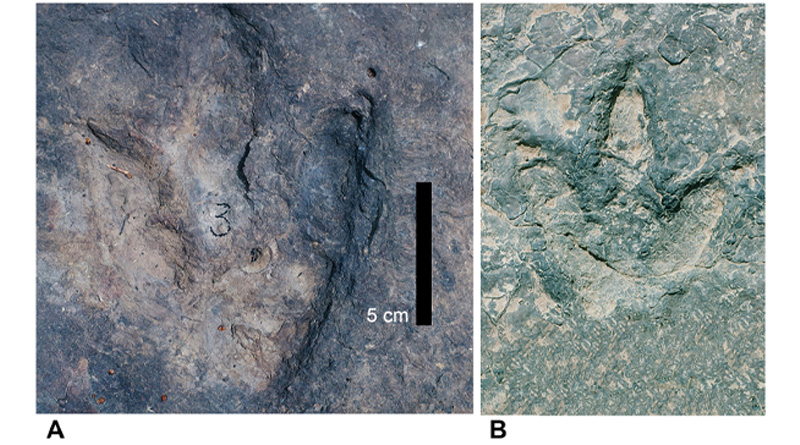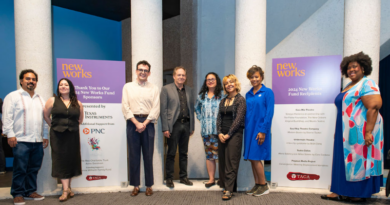SMU Welcomes Students, Tracks Dinosaurs, Acquires Art
What do scientists need to track the journey of dinosaurs across two continents despite an ocean in between? Matching footprints.
An international team of researchers led by SMU paleontologist Louis L. Jacobs has found matching Early Cretaceous dinosaur tracks in Brazil and in Cameroon.
The more than 260 footprints show where land-dwelling dinosaurs were last able to freely cross between South America and Africa 120 million years ago before the two continents split apart.
“One of the youngest and narrowest geological connections between Africa and South America was the elbow of northeastern Brazil nestled against what is now the coast of Cameroon along the Gulf of Guinea,” Jacobs explained. “The two continents were continuous along that narrow stretch, so that animals on either side of that connection could potentially move across it.”
Most of the dinosaur fossils were created by three-toed theropod dinosaurs. A few were also likely made by sauropods or ornithischians, said Diana P. Vineyard, a research associate at SMU and co-author of the study published by the New Mexico Museum of Natural History & Science.

New Mustangs
SMU welcomed approximately 1,700 first-year and 250 transfer students as classes resumed in August with most of those arriving from Texas, California, and Florida, followed by New York, Connecticut, New Jersey, Massachusetts, and Arizona.
The class, whose top interests are community service, internships, and study abroad, includes 22 veterans and 241 students who are the first in their families to go to college.
If all goes as planned, the first year on campus for these new students will be R. Gerald Turner’s last as president.
The 10th president of SMU has led the campus for more than 30 years but will transition to president emeritus whenever the next president of SMU takes office, likely on June 1, 2025.

“This transition process is being undertaken with my belief, and that of the Board, that the future success of the University is best assured when leadership changes are made while there is continued, positive momentum toward important agreed-upon future goals,” Turner said.
Contemporary collecting
The recent acquisition of four works of contemporary Spanish art supports the Meadows Museum’s focus on presenting the best of art from the Iberian Peninsula.
Pieces by renowned Spanish artists Ignasi Aballí and José Hernández, along with two by Miguel Zapata, add new facets to the museum’s collection and strengthen its holdings in this area, said Amanda W. Dotseth, the Linda P. and William A. Custard Director of the museum.
“These acquisitions reaffirm our commitment to showcasing the richness and diversity of Spanish art from the present as well as the past,” she said.









